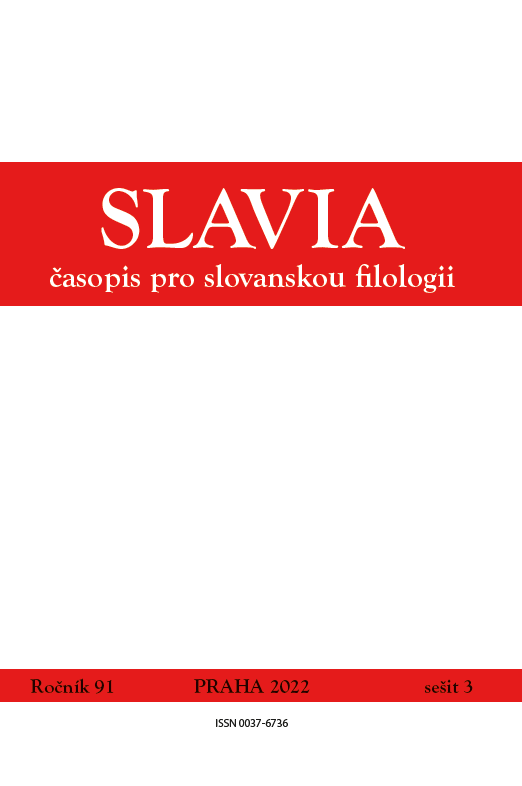Наименования букв как объект описания статьи в русско-польском словаре XIX века Петра Павловича Дубровского
The Names of Letters as Headword Articles in the 19th-Century Russian-Polish Dictionary by Pyotr Pavlovich Dubrovsky
Author(s): Jolanta MędelskaSubject(s): Western Slavic Languages, Eastern Slavic Languages
Published by: AV ČR - Akademie věd České republiky - Slovanský ústav and Euroslavica
Keywords: 19th-century Russian-Polish lexicography; names of letters as dictionary headwords;
Summary/Abstract: The article addresses the issue of placing letter names as headwords, which has not been touched upon in literature. A Russian-Polish dictionary from the late 19th century was examined in this respect. It was noted that its author, P. P. Dubrovsky, registered the old names of Russian letters (азъ, буки, вѣди...) twice: as headwords and inside those headwords where the letter (А, Б, В...) appears as a vocabulum. At the same time, for undefined reasons, he omitted the new names of letters (бе, ве, ге...), which were introduced as early as the 18th century, making an exception (but only in the letter entries) for two items: зе, те. The author of this article has detected numerous inconsistencies and errors, both in the selection of the names of letters for presentation in the dictionary and in the lexicographic description of such specific translation units as these names. The weakest point of the elaboration of the selected headwords turned out to be the fact that P. P. Dubrovsky did not take into account the expectations of the user of the bilingual dictionary at all, namely he did not provide Polish equivalents of Russian letter names, only translating the meaning, e.g. “Твердо nazwa litery Т w alfabecie słowiańskim”. Evaluated positively was the introduction of letters as a vocabulary for the phraseology into which these names have grown (e.g. Онъ аза в глаза не знаетъ), although the choice of idioms was extremely modest. A review of the contents of the Russian-Polish dictionaries published after the Dubrovsky´s dictionary showed that some also registered the names of the letters as vocabulary, but the lexicographic processing of this specific material was by no means superior to the description provided by the 19th-century dictionary.
Journal: Slavia - časopis pro slovanskou filologii
- Issue Year: XCI/2022
- Issue No: 3
- Page Range: 347-356
- Page Count: 10
- Language: Russian
- Content File-PDF

